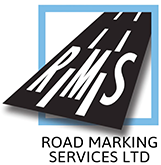 Add My Company
Add My Company
Sign In
WHEN DID ROAD LINE MARKINGS FIRST GET USED?
07-11-2021

Road line markings convey important information to motorists, cyclists and pedestrians. They allow people to understand road systems and become aware of upcoming hazards, helping to control traffic and reduce accidents. Road markings may seem like they’ve been around forever, but they are actually a relatively new invention. If you’re wondering when did road line markings first get used, read on.
WHAT YEAR WERE ROAD LINE MARKINGS INTRODUCED?
When did road line markings first get used?
Road markings were first used in the UK back in 1914, taking the form of the famous white line. They were painted onto a number of hazardous bends on the London-Folkestone road in Ashford, Kent. Whilst they became increasingly prominent on the country’s roads throughout the 1920s, it’s wasn’t until 1926 that the Ministry of Transport drew up official guidelines on their use. These guidelines set out where markings on roads should go.
The initial focus was on white lines. A broken white line in the direction of travel indicated the centre of the road. If the gaps were longer than the painted lines, it indicated that there were no hazards such as turnings or sharp bends ahead. If the gaps in the broken white line were shorter than the painted lines, this indicated an upcoming hazard. These rules remain the same today. The usage of road markings became more common during the 1930s, with white lines used as ‘stop’ lines at junctions.
HOW HAVE ROAD LINE MARKINGS ADVANCED OVER THE YEARS?
Road marking in Sheffield, Leeds, and across the UK has advanced significantly over the years. By 1944, white lines would mark the sides of the roads, helping to keep traffic in the correct lane. During World War II, the government faced pressure to make it easier and safer for pedestrians to walk during blackouts. They put white lines on the sides of the road, also marking the boundaries between carriageways and laybys. This made life much easier for pedestrians during these challenging times.
Yellow lines started to appear on the roads during the 1950s, with these markings intended to communicate restrictions on parking, waiting, loading and unloading. The aim was to reduce congestion and traffic waiting times as well as making it easier for pedestrians to access the pavements. Before yellow lines, a lack of rules surrounding loading and unloading caused a high level of disruption. These days, a double yellow line painted next to the kerb means that motorists can’t park at any time. A single yellow line is used together with signs to indicate that parking is allowable only at certain times.
Overtaking on roads considered too hazardous became an issue not long after, with the government deciding to add double white lines. Yellow boxes would soon follow, with these road markings appearing at busy junctions to help control traffic in busy areas.
WHY ARE ROAD LINE MARKINGS SO IMPORTANT?
Road Markings in Sheffield
Now that you know when did road line markings first get used, you may be interested to know why they are so important. Road markings are vital for safety since they help road users navigate the roads and become aware of any hazards. They are essential on all types of roads, from small country roads to city centre roads and motorways. Providing instant instructions to motorists, cyclists, and pedestrians, they can help to reduce accidents on the roads.
Vehicle ownership has increased steadily over the years, with more cars on the road than ever. At the end of March 2021, there were more than 38 million licensed vehicles in Great Britain, which is a small increase from the year before. More vehicles due to a rising population lead to greater traffic congestion and a bigger possibility of accidents occurring. As such, it’s vital that line markings are in place to control traffic and enhance road safety.
Adhering to road line markings is a legal requirement for motorists, with penalties for failing to comply. If drivers ignore mandatory road markings such as double white lines, they may face prosecution for either a TS20 or TS30 offence. This could lead to either a Fixed Penalty of three points and/or a fine of £100.
KEEPING ROAD MARKINGS CLEAR AND VISIBLE
To ensure that road markings are effective at improving road safety, it’s essential that they are clear and visible. On average, road markings only last four to five years before they start to appear faded and become difficult for road users to understand. This means that they often need relining over the years. At Road Marking Services, we provide professional road marking in Sheffield, Leeds, and beyond, with our team of highly skilled technicians using the best equipment and materials to ensure a first-class finish.
We’ve been specialising in road marking for over 25 years and have built up a fantastic reputation during this time. All of our work is fully guaranteed, which means you can relax in the knowledge that you’ll always receive a service that’s second to none. Our work is only complete once we know that you’re totally happy with our road marking services. We undertake jobs of all sizes, ranging from major roads and motorways to small car parks.
CONTACT US
When did road line markings first get used is a common question, with many people surprised to hear that they were only introduced at the start of the 20th century. At Road Marking Services, we carry out road marking in Sheffield, Leeds, and across the UK. For further information about our services, get in touch. You can call us on 0800 086 2509 to talk to one of our friendly and helpful team. Alternatively, send us a message via our website and we’ll contact you as soon as we can.
For more information on WHEN DID ROAD LINE MARKINGS FIRST GET USED? talk to Road Marking Services
Enquire Now
List your company on FindTheNeedle.

